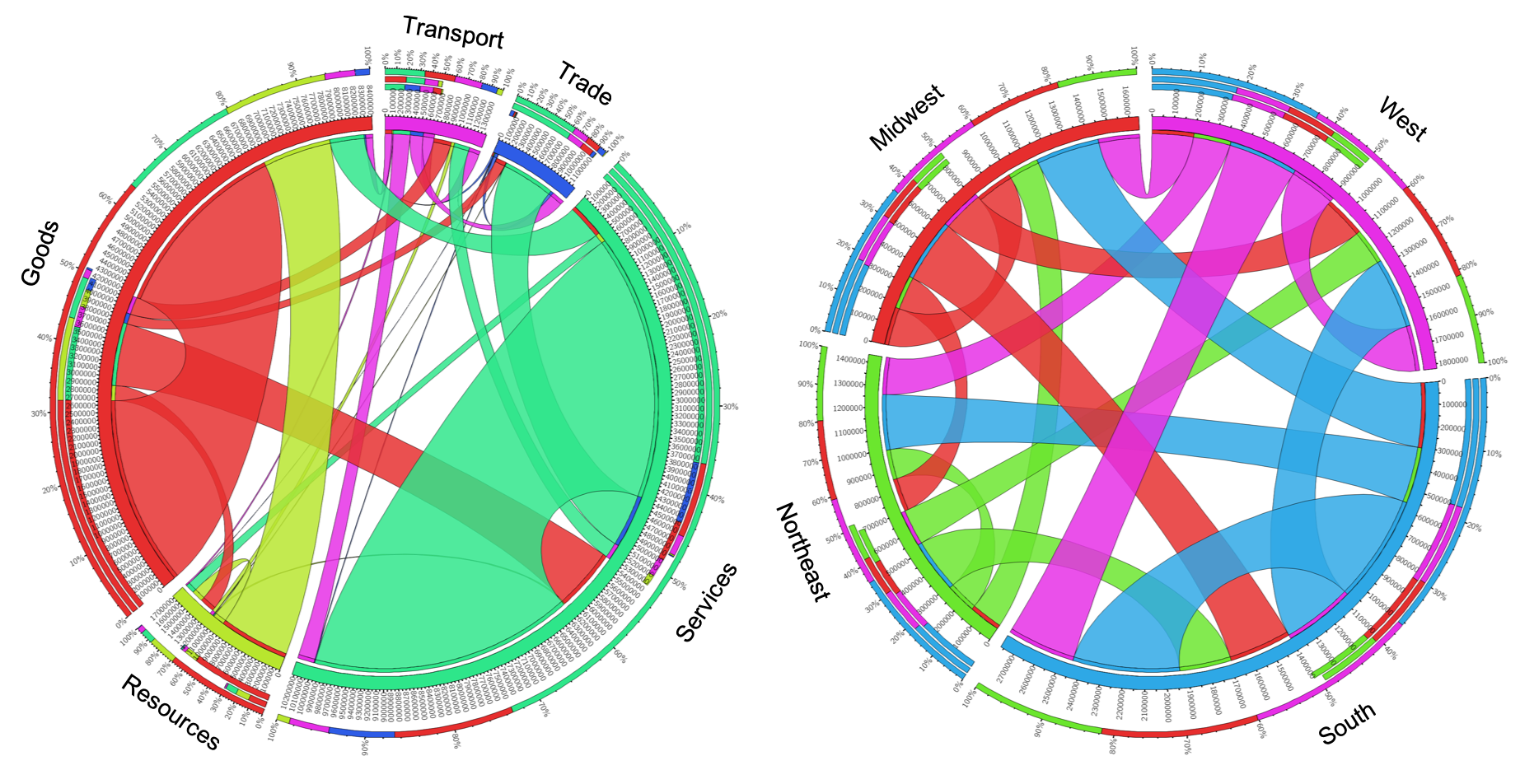MYSTERIO - rapid generation of multi-region, environmentally-extended input-output (MR-EEIO) models
Researchers:
 Increasing pressure on critical infrastructure systems from growing populations as well as regional and global resource constraints is spurring interest in sustainability. City and regional planners are often well versed in estimating economic impacts of policies, however they often lack sufficient information on the environmental impacts of their decisions to make sustainable choices.
Increasing pressure on critical infrastructure systems from growing populations as well as regional and global resource constraints is spurring interest in sustainability. City and regional planners are often well versed in estimating economic impacts of policies, however they often lack sufficient information on the environmental impacts of their decisions to make sustainable choices.
To this end, the objective of this proposed work is apply empirical-statistical downscaling techniques from climate science to enable the rapid creation of state-level, multi-regional environmentally-extended input-output (MR-EEIO) models for the US. To address this objective, the project involves five major research tasks: 1. conceptualization, including concept mapping and MYSTERIO framework development; 2. data collection; 3. model development; implementation and creation of MR-EEIO model for the US; 4. simulation and analysis, including model validation against existing datasets; and 5. dissemination of research results.

Broader impacts of the project include: 1.Increase awareness of the benefits of EEIO models in environmental and sustainability planning. 2. Provide a standardized, US-wide framework for planners to consistently estimate environmental impacts of planning decisions. 3. Assist planning professionals to make more informed decisions toward sustainable goals. 4. Identify opportunities to increase efficiency, reduce waste, close resource loops, and even to make previously resource intensive processes (such as wastewater treatment) provide societal benefits.